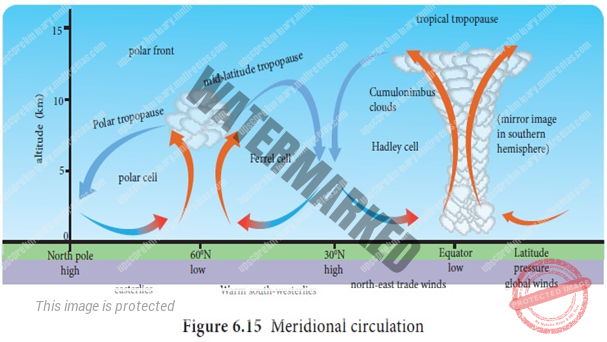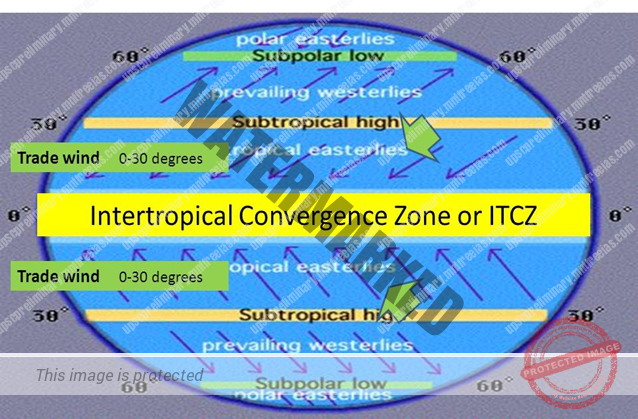- SUB-POLAR LOW-PRESSURE BELT
- BASIS OF FORMATION OF PRESSURE BELTS
- SHIFTING OF PRESSURE BELTS AND PRIMARY WIND SYSTEM
UNIT 4 – CLIMATOLOGY – PART 17
SUB-POLAR LOW-PRESSURE BELT
- Located between 45°N and S latitudesand the Arctic and the Antarctic circles (66.5° N and S latitudes).
- Owning to low temperatures in these latitudes the sub polar low-pressure belts are not very well pronounced year long.
- On long-term mean climatic maps, the sub polar low-pressure belts of the northern hemisphere are grouped into two centers of atmospheric activity: The Iceland Lowand The Aleutian Depression (Aleutian Low).
- Such belts in the southern hemisphere surround the periphery of Antarctica and are not as well differentiated.
FORMATION
- These are dynamically produceddue to
- Coriolis Forceproduced by rotation of the earth on its axis, and.
- Ascent of air as a result of convergence of westerlies and polar easterlies (we will more about these in next topic – wind systems).
- Sub polar low-pressure belts are mainly encountered above
SEASONAL BEHAVIOR
- During winter, because of a high contrast between land and sea, this belt is broken into two distinct low centers – one in the vicinity of the Aleutian Islands and the other between Iceland and Greenland.
- During summer, a lesser contrast results in a more developed and regular belt.
CLIMATE
- The area of contrast between cold and warm air masses produces polar jet streams which encircles the earth at 60 degrees latitudes and is focused in these low-pressure areas.
Due to a great contrast between the temperatures of the winds from sub-tropical and polar source regions, extra tropical cyclonic storms or lows’ (temperate cyclones or frontal cyclones) are produced in this region.
POLAR HIGH-PRESSURE BELT
- The polar highs are small in area and extend around the poles.
- They lie around poles between 80 – 90° N and S latitudes.
FORMATION
- The air from sub-polar low-pressure belts after saturation becomes dry. This dry air becomes cold while moving towards poles through upper troposphere.
- The cold air (heavy) on reaching poles subsides creating a high-pressure belt at the surface of earth.
CLIMATE
- The lowest temperatures are found over the poles.
BASIS OF FORMATION OF PRESSURE BELTS
There are two important bases on which the pressure belts are formed. They are;
- Temperature: The Equatorial Low Pressure And Polar High Pressure Belts Are Formed Due To High And Low Temperature Respectively. So they are called as ‘Thermally formed pressure belts’.
- Dynamism: The sub-tropical high and sub polar low pressure belts are formed due to movement and collision of wind system. So they are called as ‘Dynamically formed pressure belt system’.
MERIDIONAL CELL SYSTEM
The cell along with trade winds, equatorial low and sub-tropical high pressure belts is called as ‘HADLEY CELL’,
meanwhile the cell formed by westerly wind along with sub-tropical high and sub polar low pressure belt is CALLED ‘FERRELL’S CELL’.
The cell at polar formed by polar easterlies with polar high and sub polar low pressure belt is called as ‘Polar cell’
ITCZ – INTER TROPICAL CONVERGENT ZONE
The region where both trade wind systems meet is known as ‘Inter Tropical Convergent Zone’.
SHIFTING OF PRESSURE BELTS AND PRIMARY WIND SYSTEM
These pressure belts and primary wind systems are dynamic in character as they shift 5° north and 5° south from their position along with the apparent movement of the sun.


